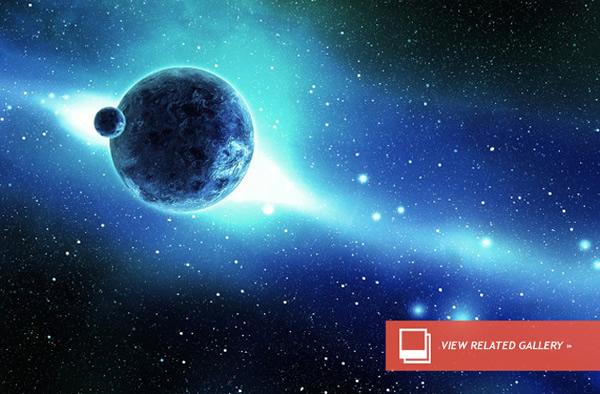Proxima Centauri to Bend Starlight for Planet Hunt
Proxima Centauri to Bend Starlight for Planet Hunt
Scientists looking for planets around the star nearest to the solar system will soon get a helping hand from Mother Nature.
Our neighbor star, Proxima Centauri, will line up very closely with a background star in October 2014 and then again with another star in February 2016, relative to Earth’s line of sight.
The geometry will enable astronomers to take advantage of a fanciful but practical ramification of Einstein’s general relatively theory, which explains how gravity curves space (and time — but that’s another story.)
Sometimes when gravity bends light waves, objects that previously weren’t visible can be seen. When Proxima Centauri aligns with background stars, astronomers want to measure the distorted views of the background stars to get a more precise calculation of our neighbor’s mass. The idea is that if Proxima Centauri has any planets in orbit, they may cause a secondary shift in the background stars’ positions during the alignments.
Because the star is so close to Earth, the patch of sky under its gravitational influence is relatively large, which makes the hunt for orbital plants possible, Kailash Sahu, an astronomer with the Space Science Telescope Institute in Baltimore, Maryland, said at the opening day of the American Astronomical Society meeting in Indianapolis on Monday.
NASA plans to task its premiere space telescope, Hubble, for the observations. Other observatories expected to join the hunt are the European Space Agency’s Gaia space telescope, scheduled to be launched this fall, and the European Southern Observatory’s Very Large Telescope in Chile.
“People have actually tried to predict such microlensing events before,” Sahu told reporters during a webcast press conference on Monday. What makes this prediction different is the extremely precise positioning details of the targeted stars, which were observed by Hubble, Sahu added.
The real test, however, will come in about 16 months.
A paper on the research has been submitted for publication in the Astrophysical Journal.(Jun 3, 2013 01:24 PM ET // by Irene Klotz)












